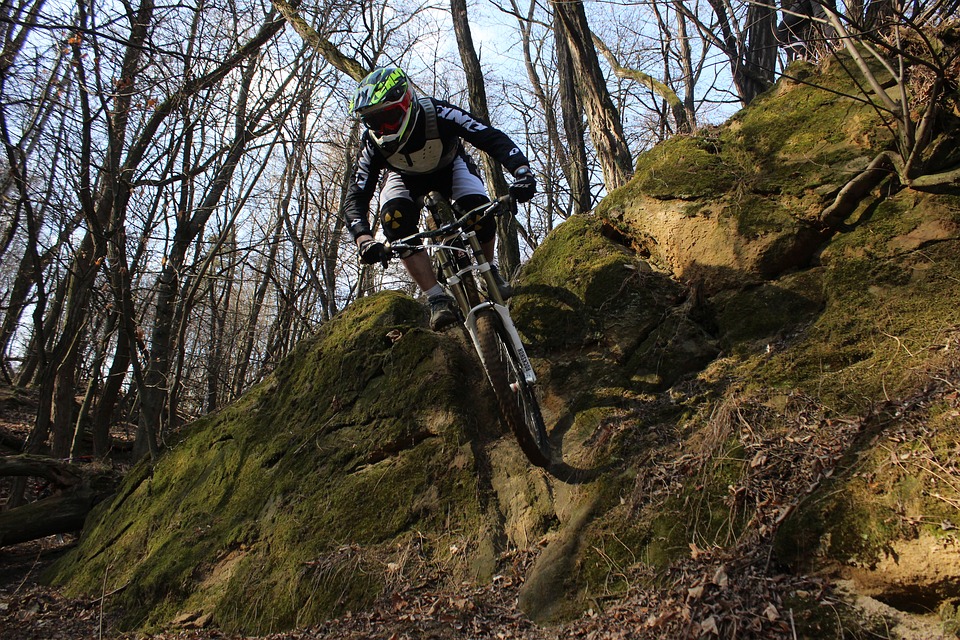What springs to mind when protective gear for mountain biking is mentioned? Helmets are a common first thought, often followed by elbow and knee pads or protective gloves. All of these elements are an important part of any selection of protective gear, but there’s more to preparing for a safe bike outing than just strapping on a helmet and hoping for the best.
Breaking down a full complement of biking equipment can be sorted into three primary categories: the essentials, the less-essentials and clothing. Knowing what sort of helmet to wear might be complicated enough but there are factors to consider that many do not take into account.
Protective eyewear can be a lifesaver when biking through rocky terrain where debris may be kicked up by your tyres yet finding casual cyclists who recommend them isn’t terribly common. If you’re interested in avoiding injuries you never thought possible, look no further.
The Essentials: Helmets, Pads and More
If you’re only capable of bringing one piece of protective wear out on a ride for some unearthly reason, wearing a helmet should be your first priority. The minor embarrassment of helmet hair is nothing compared to the serious trauma of a head or brain injury caused by an impact while not wearing appropriate gear. Simply put, a helmet could save your life one day.
Choosing one can be difficult which is why going through a few mountain bike helmet reviews before making a decision is the best way to ensure you’re getting a high-quality product. The style of helmet you choose is up to you, as some may prefer the additional security offered by full-face helmets and others might appreciate having a bit more peripheral vision with a traditional style helmet. Regardless of the style, you should find a helmet that fits your head snugly and can be adjusted to remain secure during your rides.
Pads for your elbows and knees round out the list of pad-related essentials. Keeping your joints safe means better mobility and comfort later in life. If you don’t want to stress test your pads by toppling over, ensure the tyres on your bike aren’t overly worn and are appropriately rated for the terrain you plan to tackle. Tyres may not sound like safety equipment, but a great many factors go into staying safe.

The Less-Essentials: Extra Pads and Safeguards
Once you’ve assembled a set of mountain biking gear to keep you safe in the most basic of ways, assembling gear to keep the rest of your body safe in fringe cases and strange accidents is a wise but not necessarily vital move to continuing your safety regimen. If you chose a helmet that doesn’t include a protective face mask, finding goggles to keep debris and stray tree limbs out of your face during a ride should be fairly high on your list of non-essentials.
Additional pads, such as padded shorts to protect your hips during falls or shin guards to catch what your kneepads miss are also sound investments. Biking gloves can keep your hands safe from scrapes and bruises as well as enhance your grip on your bike’s handlebars for finer control. Neck braces keep the neck rigid to prevent whiplash and other injuries. If you aren’t sure where to begin, reviews for different types of gear might give you an idea of what protection options are right for you.
Clothing: Dressing for Your Ride
What to wear on a bike outing depends on the season, temperature and weather conditions you expect to encounter while out and about, but a general rule of thumb is to find clothing that wicks away moisture and allows flexibility without compromising safety. Clothing options for cyclists are wide and varied, but try to stick to essentials when you’re just starting out. A sturdy pair of athletic shoes and biking gloves are a good place to start.
For summer riding, athletic undershirts and padded biking shorts allow you a full range of movement without calling for bulky clothing that may lead to overheating. Meanwhile, winter rides call for layering up in clothing you can easily adjust on the go to ensure you don’t sweat too much in conditions where the sweat might lead to nasty chills. You may even wish to enhance your wardrobe with neoprene face masks, scarves, thick socks and compression clothing underneath your winter outerwear.
Finally, a worst-case scenario accessory comes in the form of a beacon that tracks your movement via GPS and alerts medical professionals should you have an accident that renders you unconscious or unable to alert the authorities yourself. ICEdot and similar products offer an extra layer of protection that clothing just can’t provide and there’s nothing quite as unfortunate as taking a spill while riding alone and being left unable to help yourself out of a bad situation.

Conclusion
No matter how you choose to dress for your upcoming mountain biking rides, knowing how to protect yourself should come before aesthetic form. Your body is important and should be kept safe, so strap on your helmet and ride with your head held high knowing you’ll be safe in case of an accident.
Browse all MTB products at ProBikeKit UK here!